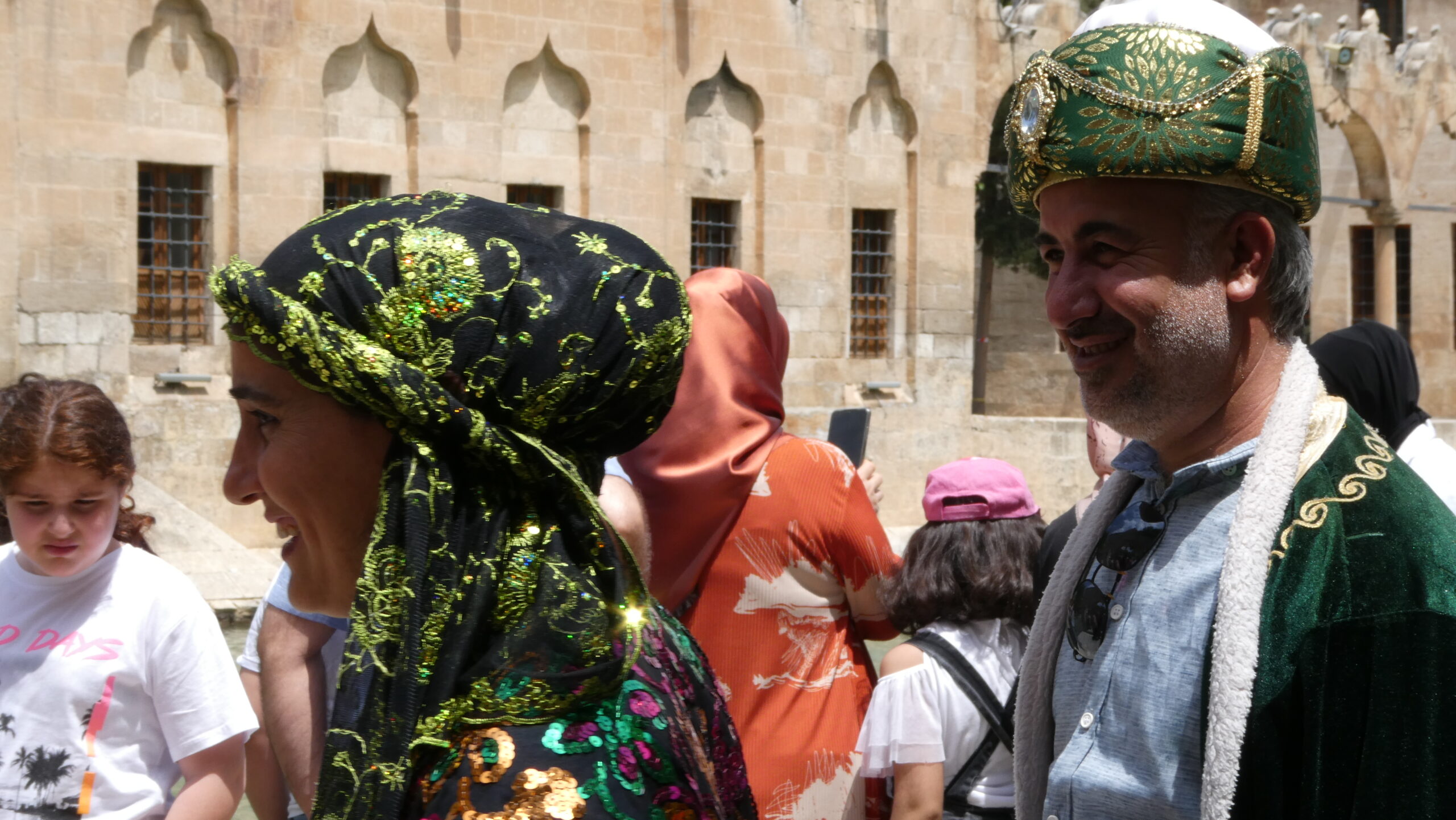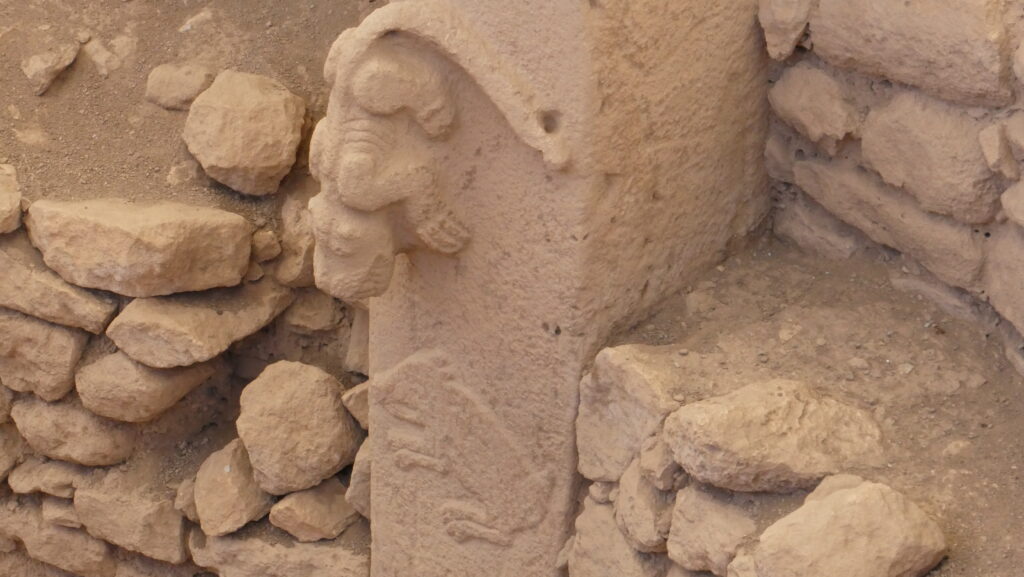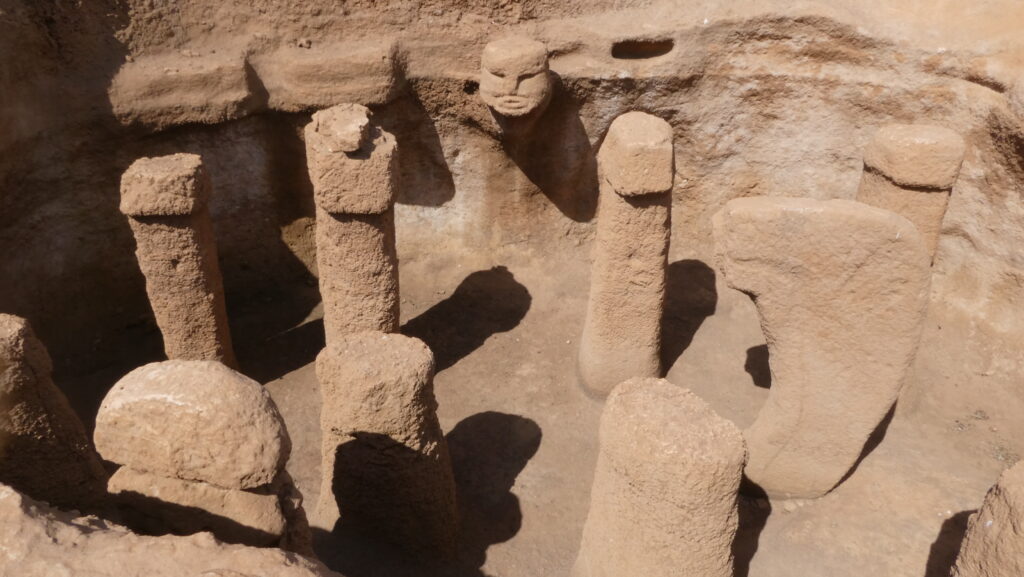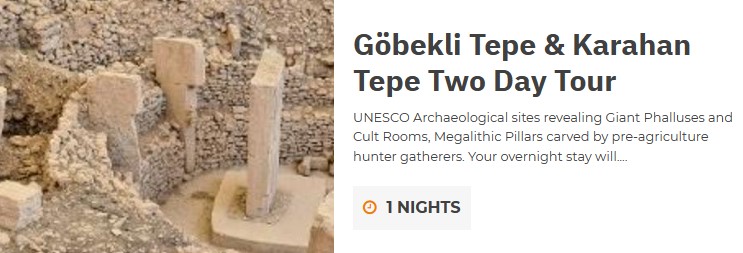Located in south-eastern Turkey and in the northern arc of the Fertile Crescent, Şanlıurfa (or Urfa, as the locals call it) is a city with a truly ancient pedigree; it is a Portal In Time. More ancient, in fact, than almost any place on earth. There is evidence of continuous human habitation going back as far as 10,000 BCE and the oldest, monumental, freestanding (and life-sized) image of a human being, the enigmatic “Urfa Man” or “Balıkligöl statue” dating back about 12,000 years, was discovered in the city’s central Yeni Mahalle district opposite the ancient citadel which dominates the Urfa skyline and now resides in the Sanliurfa Archaeological Museum.
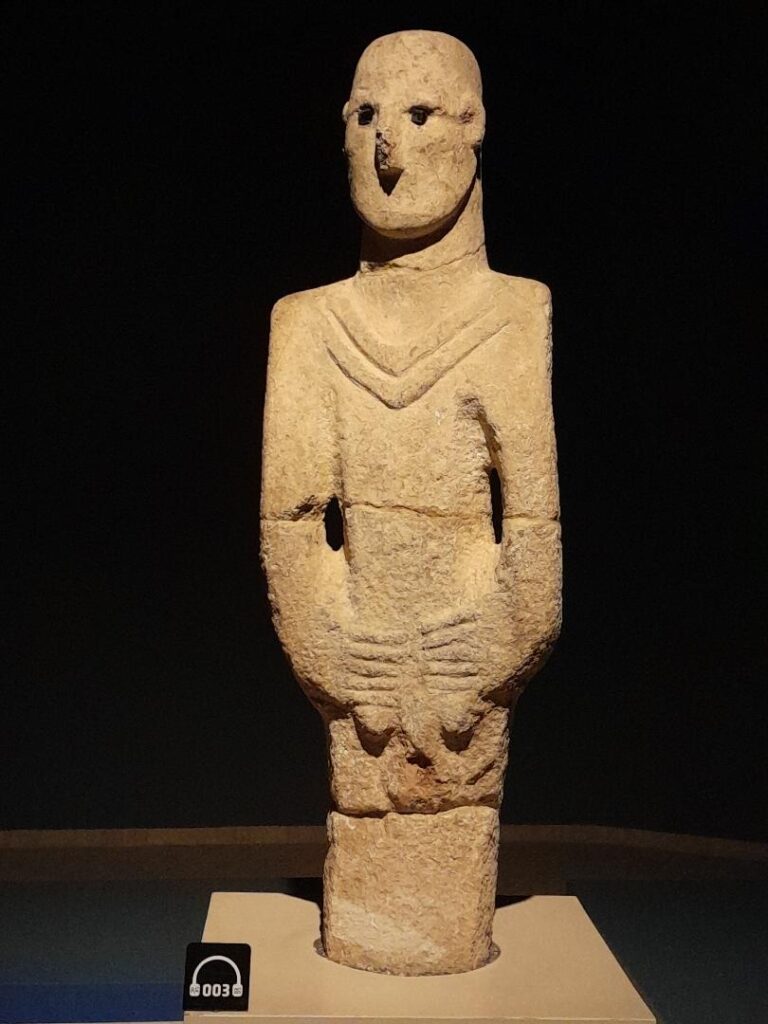
The Yeni Mahalle district is an area of numerous natural springs and a water course, which attracted a number of Neolithic settlements, the route of which took in the site of Haleplibahçe, the modern day Balıklıgöl and looped around to the old bazaar district. Essentially, this is historic Urfa. The stream feeding these springs, the Karakoyun Deresi (the Black Sheep Creek) was above ground until 525 CE when it was blocked and re-routed by a dam built during the reign of the Emperor Justinian. This Justinian public works programme is one of the earliest flood control systems for which we have extensive information. The loop of the Karakoyun and the saddle formed by the river was an obvious place for settlement during the Neolithic period and the evidence of Neolithic settlement is considerable.
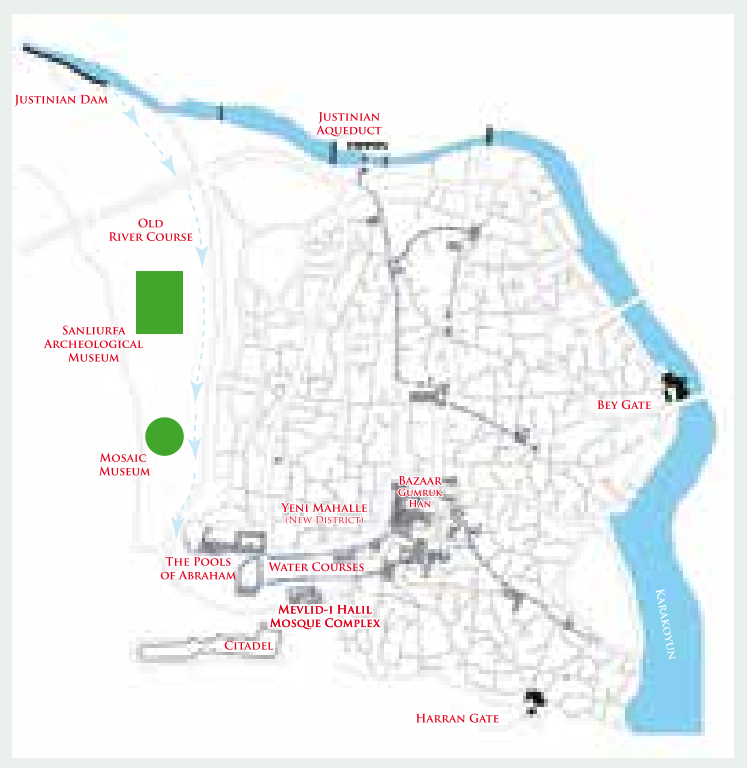
Apart from Urfa Man a number of buildings with terrazzo floors, several “T” shaped anthropomorphic stele similar to findings at other sites in the region and significant quantities of flint tools along with the remains of flint-tool manufacture were found during urban regeneration projects. It is also worth pointing out that terrazzo flooring, which is a product made from crushed and heated lime stone, represents possibly the very first industrial activity undertook by early human beings.
Something important is discovered with each new urban development. However, the gully formed by the river was always prone to flash flooding and while this was not significant for the low-density Neolithic settlements on the slopes of the hill, as population densities grew it did become a problem. There are records of a serious flood in November of 201 CE in which about 2,000 people were killed.
Another flood was recorded in 301 which demolished a large section of the city walls, another in April 413 caused extensive damage in the city, while in April of 525 a major flood occurred partially destroying a royal palace and killing, according to one account of the time, about 30,000 people. It was this event that resulted in the dam project which rerouted the body of the river away from the old city. A subterranean river, reduced in volume, remains to feed the Pools of Abraham and the bazaar district before it re-joins the new river course east of the city.
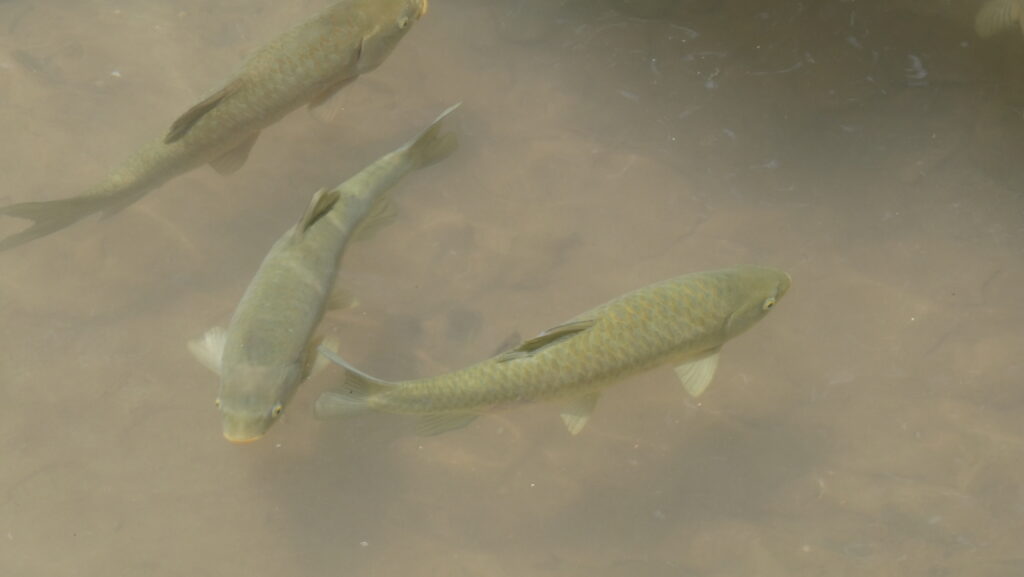
The footings for the dam and a number of important aqueducts which channelled the water flow across Urfa’s numerous gullies, can still be seen today to the north and north-east of the city centre. While later floods did occur, such as 1928, there was nothing that matched the catastrophic scale of the floods prior to Justinian’s great flood control project. The most recent flood was 15 March 2023, whilst spectacular for its speed and power, did cause the deaths of 8 people who were caught in their cars in an underpass just north of the Ancient City Centre.
Article continued below…
Ancient sites surround Urfa and just a few kilometres outside the city there is Göbekli Tepe, the Stone Age sanctuary which dates back to around 10,000 BCE or even earlier. Göbekli Tepe, like no other site, establishes the great age and unexpected sophistication of human habitation around Urfa. Göbekli Tepe is the oldest example of monumental architecture to be discovered and it is remarkable to consider that more time separates the builders of Stonehenge from the last builders at Göbekli Tepe than separates us from the builders of Stonehenge.
Archaeologists believe that the last enclosures at Göbekli Tepe were abandoned in around 8,000 BCE and that it was used as a religious and ceremonial sanctuary for about 2,500 years, which is a greater time than that which separates us from the birth of Christ. At Göbekli Tepe we see evidence of an enigmatic, elusive faith and a culture that lasted longer than the time Christianity has existed but which simply vanished without trace, only to re-emerge in recent times.
Not far from there, is the settlement site of Nevali Çori now beneath the waters created by the great Ataturk dam on the Euphrates, but which yielded a huge quantity of artefacts from the monumental to the personal and which dates from a similar period. In fact, right across the Urfa region there are many early Neolithic sites which have been identified and which are undergoing excavation. To the east of Göbekli Tepe there is the contemporary site of Karahan Tepe which combines both domestic and ceremonial features and although there are strong similarities it does also include some unique cultural features. To the west of Sanliurfa there is the newly excavated site of Sayburç again with unique cultural and artistic features of its own. The high density of Neolithic sites now emerging in this part of southeastern Turkey have resulted in the renaming of this broader area as the Tas Tepeler Region. Tas Tepeler in Turkish simply means stone hills.
A mere 100 kilometres away as the crow flies, lies the Karacadağı shield volcano and the place where the very first domesticated wheat comes from. Everything seems to begin in this ancient place between the two great rivers of the Euphrates and the Tigris.
Muslim tradition identifies Urfa as the biblical city of Ur of the Chaldees and, therefore the birthplace of the Prophet Abraham. While this may be disputed, what isn’t questioned is Abraham’s residence in nearby Harran which is mentioned in the Book of Genesis. Tradition also identifies Urfa as the birthplace of the biblical Job and it is from these ancient religious connections that Urfa derives its sobriquet as “The City of Prophets.”
Urfa, then called Edessa, also has the distinction of being the first state to formally accept Christianity as its official religion and while the circumstances of this event are shrouded in mythology, we can say that Christianity was firmly established as the dominant faith in the city by around 190 AD and that one of the early Christian councils was held here in 197 AD. However, it was the city’s Syriac ruler Abgar IX (177-212) who gets the credit.
Islam arrived in 638 in the first surge of the new faith out of its Arabian homeland. Edessa was taken and held between 1098 and 1150 by the Crusaders as an independent Crusader state known as the County of Edessa; in fact the Catholic Church still lists a titular Bishopric of Edessa in Osrhoene, a faint historical echo. With the fall of the Crusader states and the Kingdom of Jerusalem, Urfa became a permanent Muslim city under a succession of Muslim dynasties culminating in the Turkish Seljuks, the Mongols, the Mamluks and finally , from 1517, the Ottomans.
The Sultan who took Edessa for the Ottomans was Sultan Selim I, otherwise known as “The Grim.”
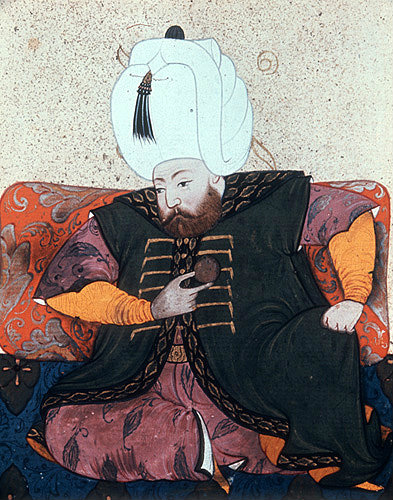
Following his success at Edessa, Sultan Selim continued his campaign to Cairo where he finally crushed the Mamluks and incorporated their territory into the Ottoman Empire. This had followed on the heels of a successful campaign against Persia that was settled by the battle of Çalderan in eastern Turkey, near biblical Mt. Ararat, in 1514. This is an important sequence of events that still resonates to this day because these two campaigns conducted by Selim I more or less set the boundaries between Shia and Sunni Islam, divisions which are still being played out in the first decades of our current century. However, there is still a sizeable Christian community across the region even today. The Old City of Urfa, a short walk from the museum complex is the Balıklıgöl district at the base of Urfa’s citadel.
Article continued below…
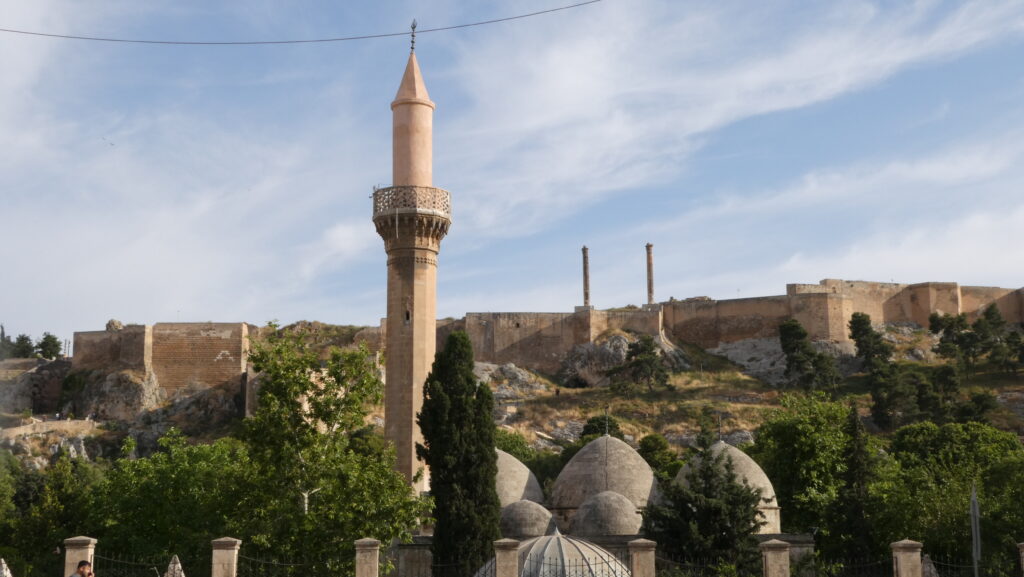
The citadel, as we see it today, was constructed in the early ninth century CE during the Abbasid period. However, it is constructed on a Neolithic site dating back to about 10,000 BC. This point has clearly been used as a defensive position for thousands of years but prior to the sixth century there is no documentary reference to a formal fortification. The Abbasid citadel we see today is built on a natural promontory and with the help of a considerable piece of engineering, was literally separated from the hill behind it by the excavation of a deep fosse with sheer sides cut into the rock and which provided a formidable defence.
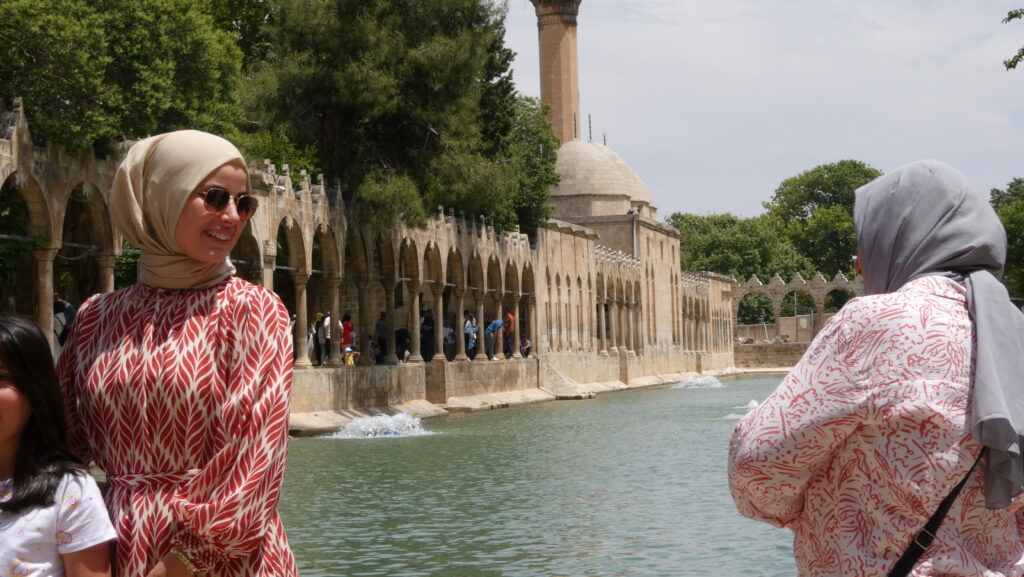
The Balıklıgöl gardens below the citadel represent a confluence of history and faith. While its origins lie obscured by the passage of time, this part of Urfa is a melting pot of myths and traditions anchored in the Abrahamic faiths. Of immediate interest, as one enters the park, coming from the museum district, is the Pools of Abraham complex. An old legend has it that the Prophet Abraham, as a punishment for destroying pagan idols, was condemned to death and cast from the heights of the citadel onto a pyre at the foot of the hill. In response, God created a pool of water around the pyre which doused the flames, saved Abraham’s life and in the process, the dying embers and coals were miraculously transformed into fish, whose descendants inhabit the pools in great numbers to this day. And hence the name, Balıklıgöl, which in Turkish means “Lake of the Fish.”
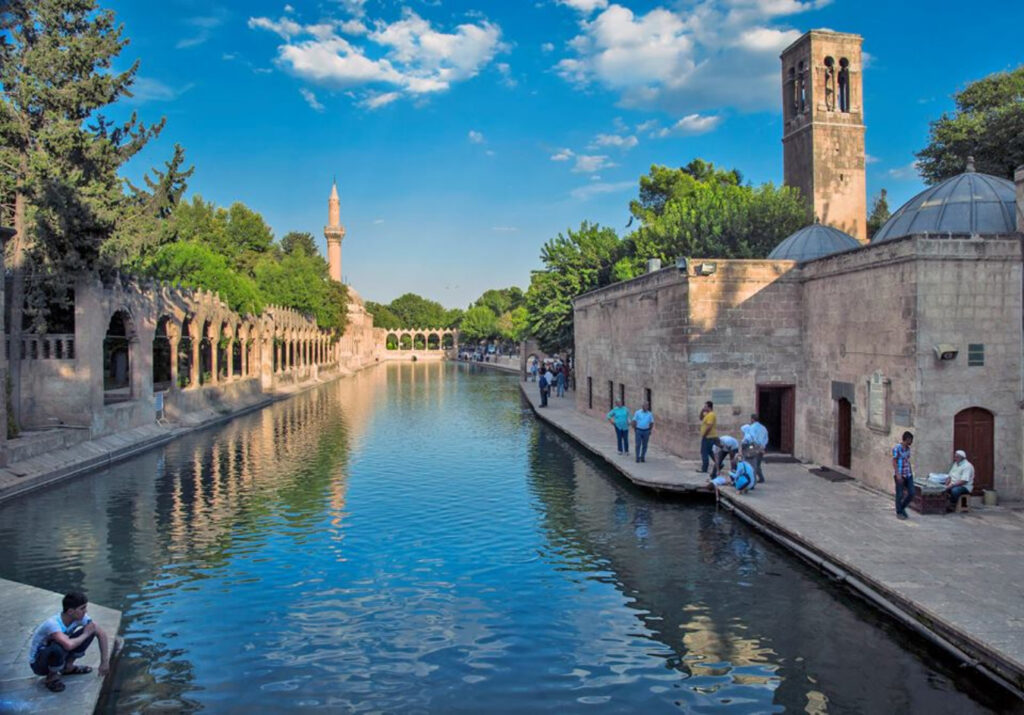
The oldest building here is the modest Halilür Rahman mosque which you pass to approach the first fish pond. It is part of a bigger complex that surrounds the lake and which includes a religious school (madrasa), a cemetery, a charitable foundation and two mosques. Locally known as the Döşeme or Makam mosque it was built on the same ground plan as the Church of the Virgin Mary which it replaced. A short, square minaret which was probably the original belfry survives. The 17th century Ottoman traveller and diarist, Evliya Çelebi who visited Urfa in 1650, mentioned it saying that it was the oldest of Urfa’s many mosques. All in all, Çelebi mentioned 22 mosques and 66 neighbourhood mesjids in Urfa, most of which are still standing. Opposite the Halil-ür Rahman mosque on the northern side of the fish pond is the Rizvaniye mosque. Built in 1716 by an Ottoman governor, Rizvan Ahmet Pasha, the two mosques and the lake with its teeming shoals of carp are the iconic images most associated with Urfa.
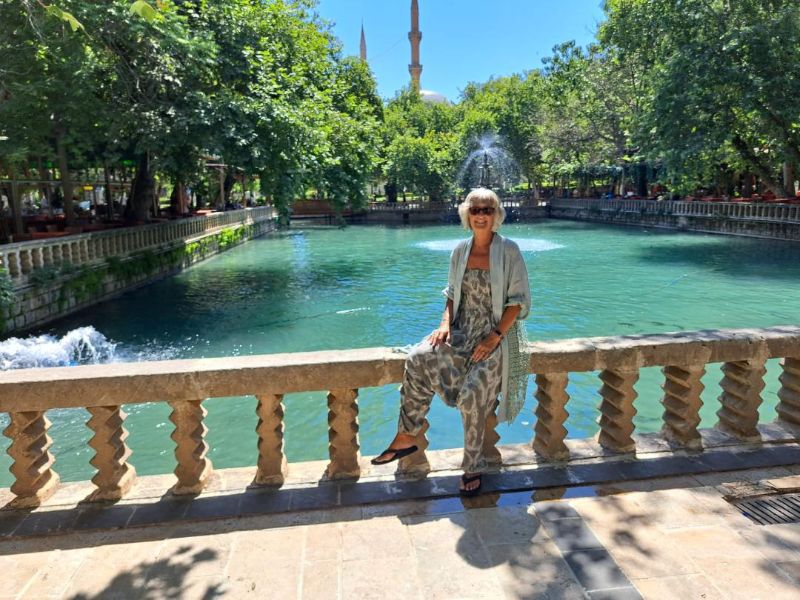
The path away from the Pools of Abraham takes one through a garden dotted with cafés and open-air restaurants (they don’t serve fish) which are clustered around a larger square lake with a fountain and rowing boats that are popular with young families, teenagers and, even in a conservative religious city like Urfa, courting couples, although there is always a third party present to ensure decorum is maintained. Courting is always done in threes in Urfa! The park around the pools is charming and always full of life as Urfalılar, the people of Urfa, take the air.
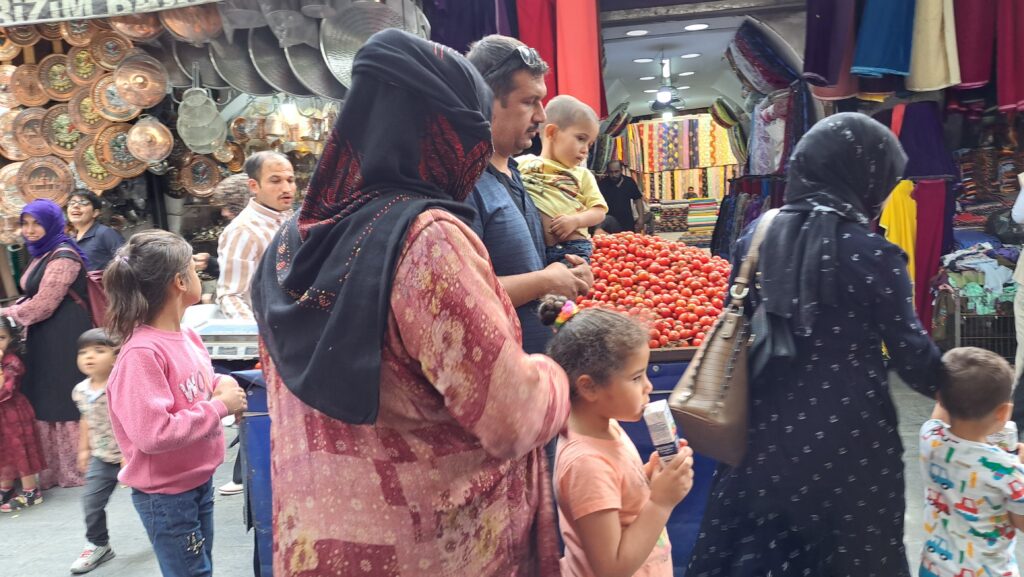
The commonest phrases one hears as so many people of all ages, especially the children, want to test their English is “Welcome”, “What’s your name?” and every now and then, “How old are you?”, all usually followed by fits of giggles, smiles and lots of mime before they flutter off like flocks of sparrows. All of this brings us to the serious religious business of Urfa; the Mevlid-i Halil Cave, the birthplace of Abraham. The unassuming Cave of Abraham is part of a religious foundation that includes a Dervish lodge and the Mevlid-i Halil mosque. The word Mevlid means ‘holy birth’ in reference to the belief that Abraham was born in the cave at the centre of this complex.
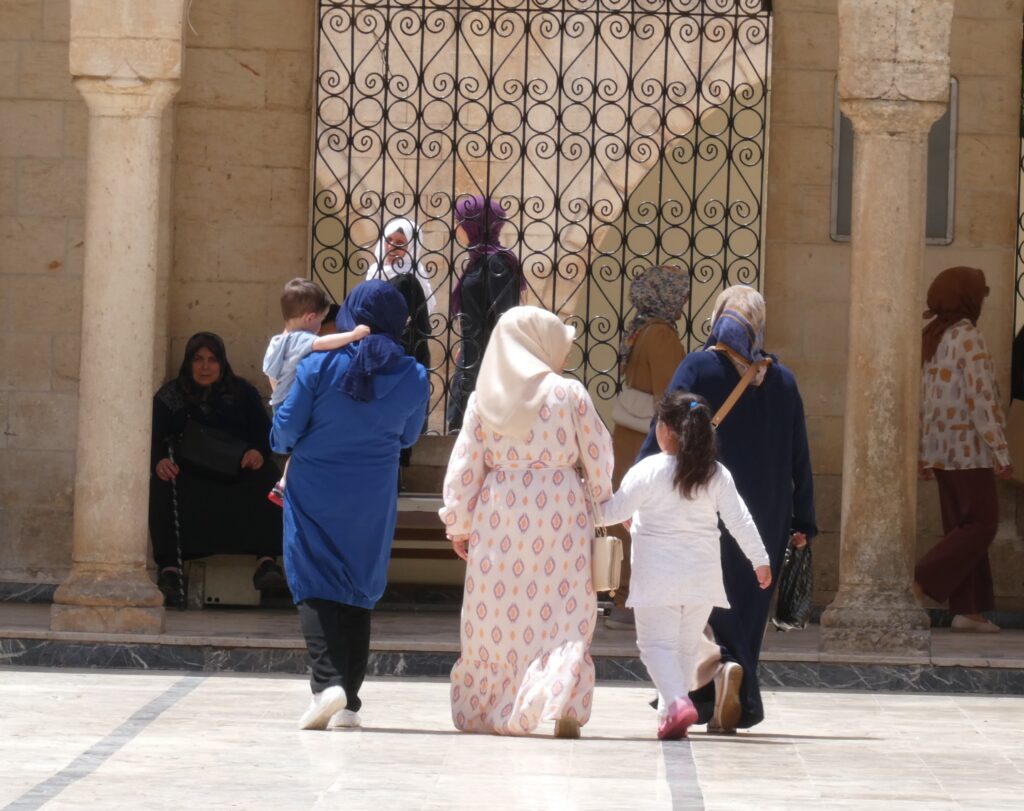
However, this site clearly has had a religious significance for a very long time since this was the site of a pagan temple and shrine that goes back to the Seleucid period. There is also record of a Jewish synagogue as well as an early Christian church from about 150 AD and a later Byzantine church. An Ottoman mosque was constructed in 1523 but the beautiful and very elegant, classical Ottoman style mosque we see today dates from 1986.
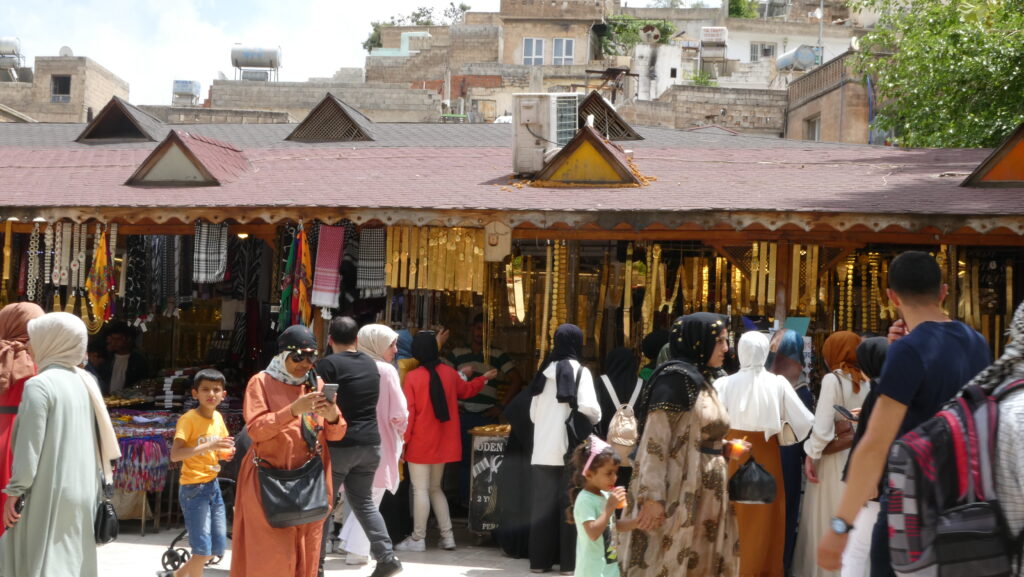
The Bazaars From the Balıklıgöl and the Mevlid-i Halil cave and mosque, it’s just a short walk to the covered bazaar and it’s the bazaar that gives one the truly vibrant, polyglot experience of Urfa where one can hear a jumble of Turkish, Arabic and Kurdish in an environment that seems to have come right out of the 16th century which, of course, it has. The bazaars and hans (a type of inn) in both the Seljuk and Ottoman periods were usually established and protected as a part of a charitable foundation, or Vakif. In Urfa’s central bazaar district there are, in fact, two adjoining bazaars. One was built in 1562 by the order of Sultan Suleiman the Magnificent, and extended in 1740. The second bazaar is the Huseyniye Bazaar, used as a copper market, built in 1887.
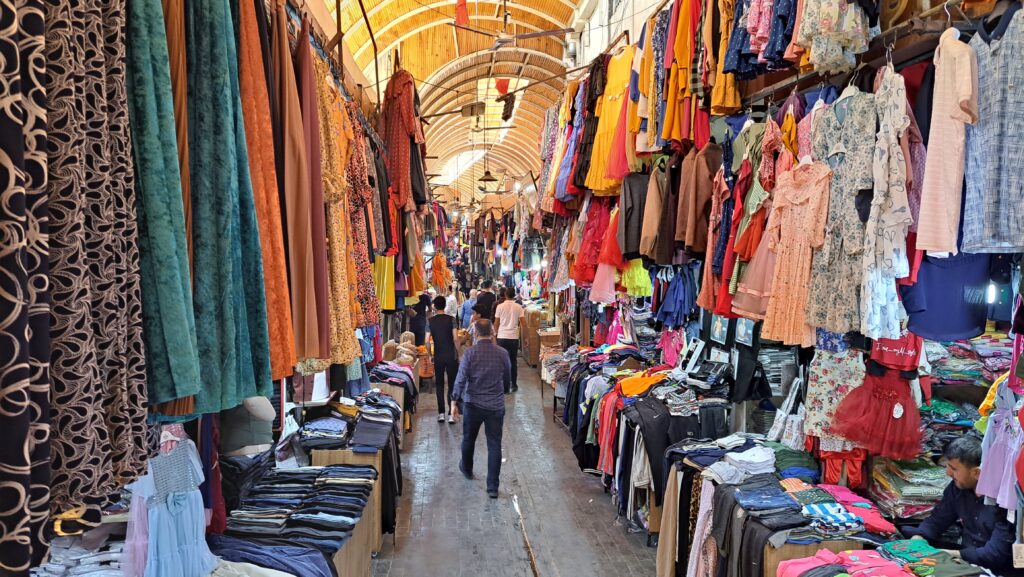
Both bazaars are thriving, bustling market places and workshops serving the working class people of Urfa with everything from pots and pans and suits of clothes to tasty comestibles and gold and silver jewellery for weddings and births. Need a cauldron? Then the Kazan (cauldron) Çarsışı in the metal workers’ district is the place for you.
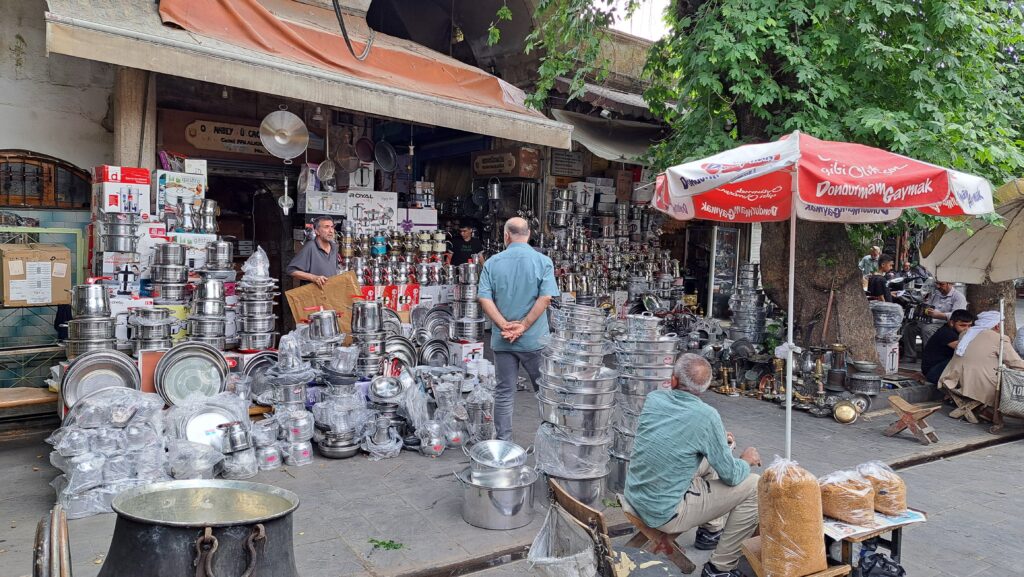
A new chair? Then it’s the Oturakçı Çarşısı (chairmakers’ market) you want. Do you need a backpack mended or a pair of trousers let out? Then take yourself off to the Kavafhane Çarşısı where the tailors and shoemakers can be found hunched over antique-looking mechanical contrivances and sewing machines busily stitching and sewing clothes and accessories for the people of Urfa.
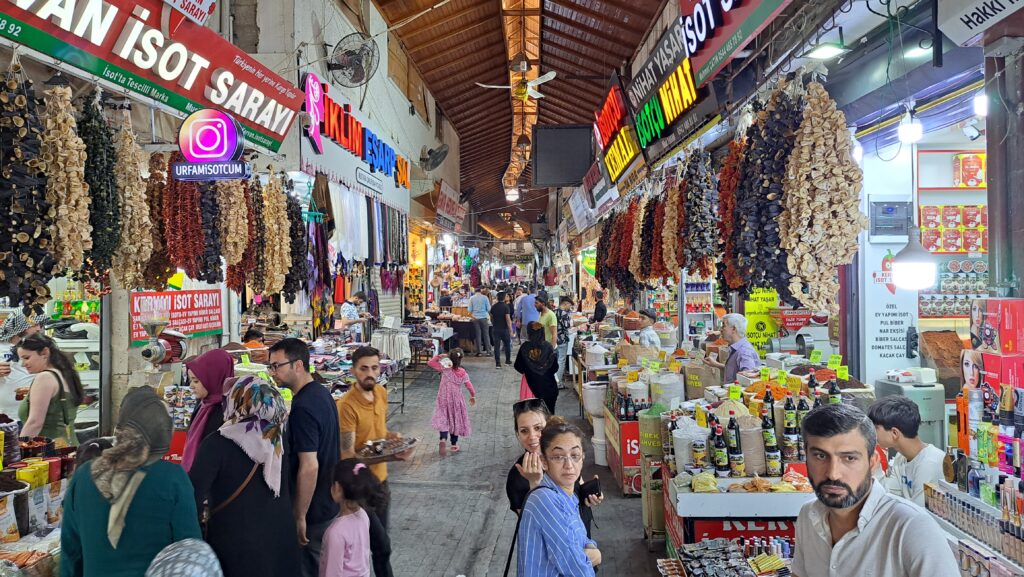
The Gumruk Han sits between the two bazaars connecting them like a hinge and while at first glance it all looks chaotic, very quickly one begins to discern the order and the logic of the place, not only in terms of modern commerce but also in terms of the ancient patterns of trades’ and workers’ guilds, each of which has a defined and protected space within the bazaar.
It is a place one can easily get lost in but the wrong path is always interesting and the right way will be found soon enough. Just remember the old Turkish saying: “when God wants to make a poor man happy, first He causes him to lose his donkey, then He causes him to find it again.” Take a moment to ponder that saying’s deep truth while you relax and sip a cup of thick Turkish coffee in the Gumruk Han, the salient feature of which is the refreshing, cooling water course at its centre. This is the water source that was the Karakoyun and it travels underground through the bazaar and is the same water source that feeds the Mevlid-i Halil Dervish lodge, mosque and cave complex, as well as the Pools of Abraham today and is the reason for the city’s existence in this place.
When the month of Ramadan falls during the hot summer, and when the han is a much quieter place, the local boys descend on the courtyard where they have riotously good times diving and swimming in the water course and through the arched channels at the courtyard centre rather like the Balikligol fish at feeding time just a short distance away.
The older 16th century bazaars feeding off the han are broken into sections describing either their location in relation to the han or the particular group that they serve. So, we have the Han Önü Bazaar (the one in front of the han), the Sipahi Bazaar (Siphahis were mounted levies serving in the Ottoman military), the Boyahane Çarşısı (the dyehouse), the Pamukcu Bazaar (cotton makers) and so on. The Gumruk Han, then called the Yetmiş Han, was also mentioned by Çelebi in his 1650 travelogue.
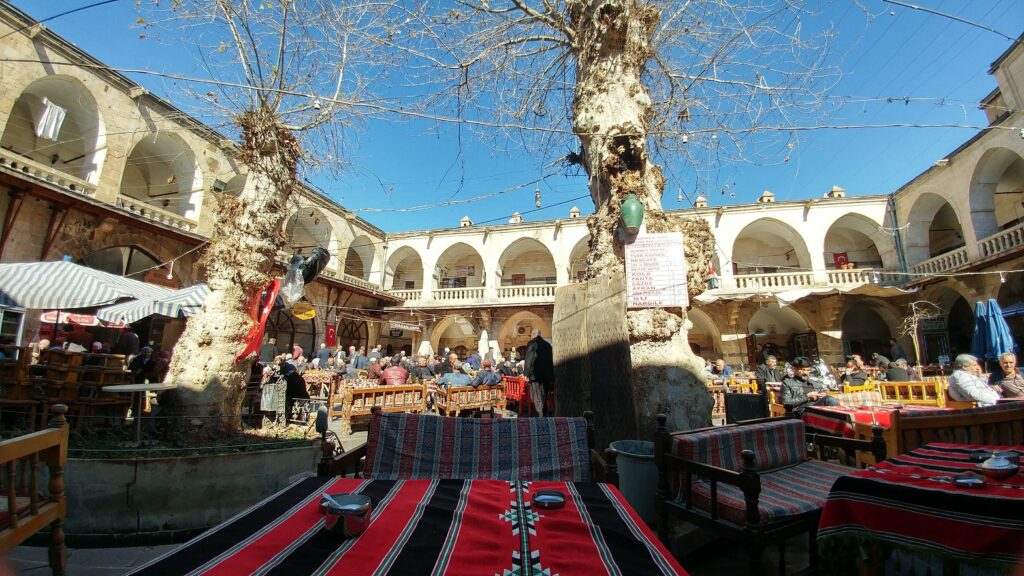
In Ottoman times the han was usually at the centre of the bazaar and commercial district of a city and it was here that the most precious items such as silk were traded. In fact, the bazaars were, and still are, a constant feature of travelogues written by visitors to Turkey and the bazaars of Urfa are amongst the best in the land; they still retain an ancient flavour and an exotic ambience now lost from bigger markets and bazaars in places like Istanbul with its massive covered bazaar. Not only were the bazaars and hans places to shop and do business but they were places to stop and pass the time of day with friends over a glass of tea and a game of Tavla. And in Urfa, a Portal in Time , this is still true.
We are sure we have now whetted your appetite for adventure. Sanliurfa is one of our favourite cities to visit for all the above reasons. If you now feel that sense of adventure and yearning, please click on the link below to find out more about our exciting range of Scheduled Tours. Thankyou very much for taking the time to read our latest Travel Journal. Best Wishes Sally and Nick
Scheduled Tours – Eastern Turkey Tours
